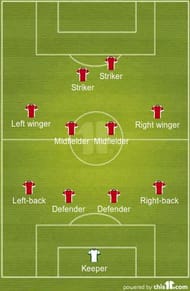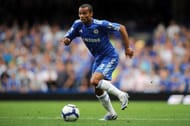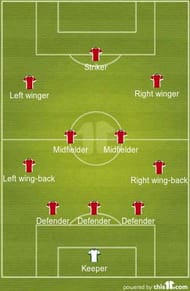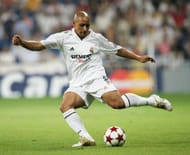Full-back – Left and Right
Full-backs is a position that has evolved over decades. Initially, the full-backs were the deepest players, closest to the goalkeeper. However, once the centre-half role was pushed back, the full-backs went wider and became left-back and right-back. They are primarily used in a formation that has 4 defenders at the back with full-backs flanking the two centre-backs in the middle.
As a result, the skill set required have changed from height and strength to pace and excellent reading of the game for it is the job of full-backs to prevent attacks from the wings and to deal with wingers who cross the ball into the penalty box. The natural preference is, therefore, a left-footed player for left-back and a right-footed player for right-back.
In the modern game, the full-back role requires attacking contribution as well in terms of marauding forward and putting in crosses. Some of the best full-backs around are Germany’s Jonas Hector, Barcelona’s Jordi Alba and Bayern Munich’s Philipp Lahm.
Wing-back – Left and Right
A wing-back is effectively an attacking full-back whose attacking ability and threat are just as important as the defending ability if not more. Wing-backs are used in a formation that uses 3 central defenders at the back. The wing-backs are stationed on either side slightly ahead of the defensive line and the term is an amalgamation of “winger” and “full-back.”
As can be understood, this role requires incredible stamina for running up and down the wings. They are tasked with providing width for their team and put in crosses for their forwards to score and how attacking the wing-back is depends on the formation used.
For example, in a 3-5-2 formation, wing-backs position is in the midfield 5 and are therefore much more attacking. On the other hand, in a 5-3-2 formation, the wing-backs are positioned in defence and are therefore more defensive. Real Madrid and Brazil’s Roberto Carlos was one of the best wing-backs ever.




